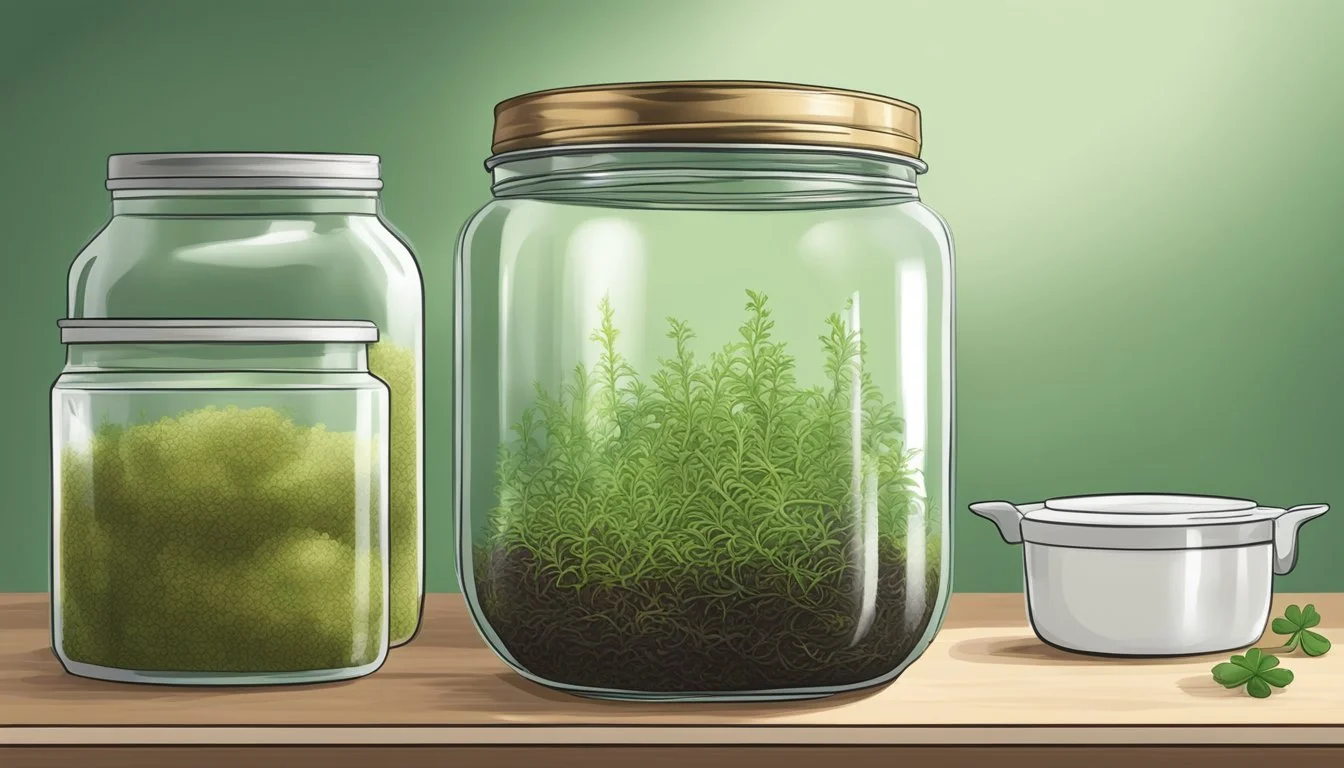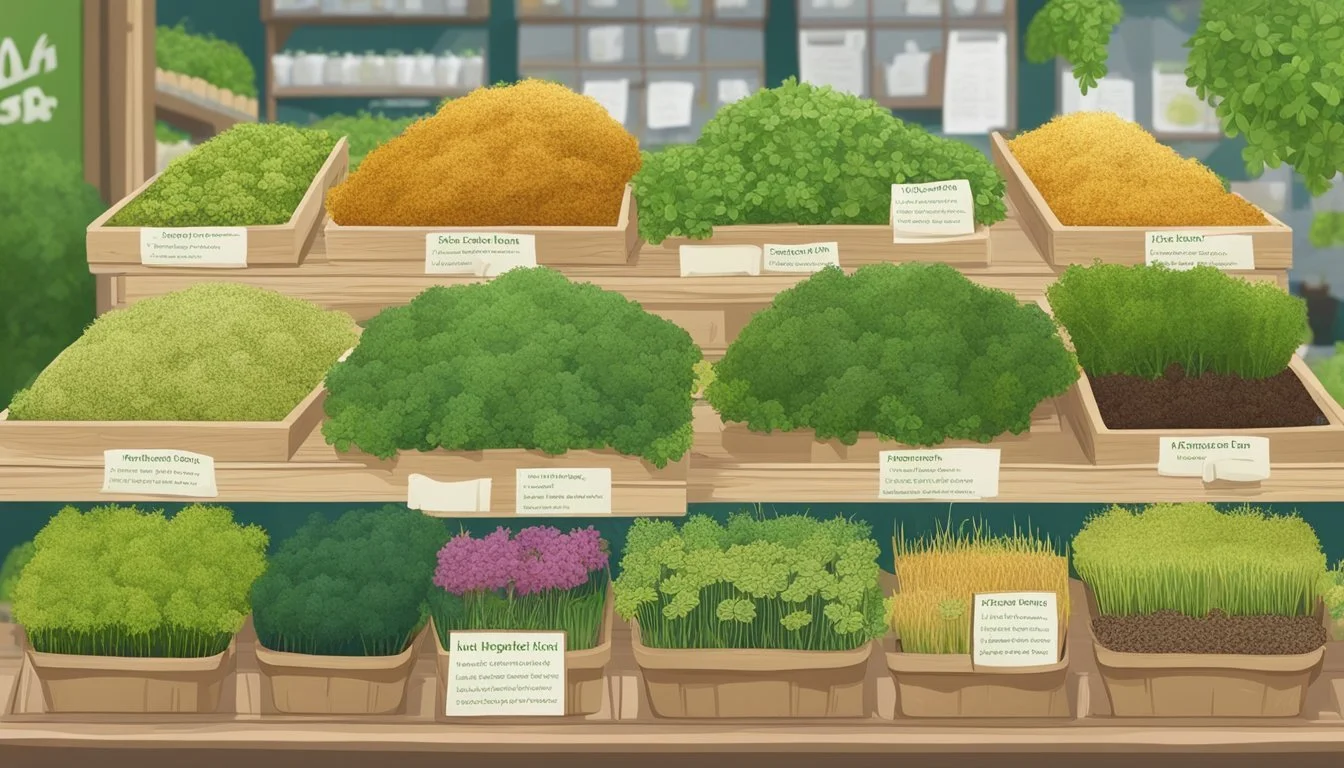How Long Does Irish Moss Last?
Shelf Life and Storage Tips
Irish moss (how long does irish moss last?), a type of seaweed with the scientific name Chondrus crispus, is known for its long shelf life when properly stored. As a dried product, Irish moss does not easily expire if it is kept in an air-tight container and shielded from sunlight. This resilience is due to the dehydrated state of the seaweed, which inhibits the growth of microbes that would typically lead to spoilage.
Given the right conditions, Irish moss can remain effective for several years. Homebrewers, who utilize Irish moss for clarifying beer, often report successful use of the seaweed even after many years of storage. The shelf life, therefore, is contingent upon how well the moss is preserved post-harvest. When stored optimally, it maintains its properties and does not lose effectiveness, allowing for prolonged usage.
Users can generally gauge the viability of their Irish moss through changes in its appearance and smell. Fresh Irish moss typically has a light tan or grey color, mirroring the hues of oatmeal or sand, and may carry a mild oceanic odor. Any marked alterations in color or emergence of a strong, unpleasant smell may indicate that the Irish moss is reaching the end of its usability, signaling it's time to replace it.
Characteristics of Irish Moss
Irish Moss, known scientifically as Sagina subulata, is a perennial evergreen plant that features a soft, lush carpet of greenery in gardens and landscapes.
Biological Classification
Kingdom: Plantae
Order: Caryophyllales
Family: Caryophyllaceae
Genus: Sagina
Species: S. subulata
Irish Moss is classified as a member of the Caryophyllaceae family. As a perennial, it survives multiple growing seasons.
Physical Appearance
Leaves: Small, awl-shaped, bright green
Stems: Thin, intertwined
Flowers: Minute, star-shaped, usually white
The plant is an evergreen, maintaining its vibrant green foliage throughout the year, which makes it an attractive ground cover option for gardeners seeking winter interest.
Growth Habit
Form: Dense, mat-forming
Spread: Up to 12 inches
Height: 1 to 2 inches
Irish Moss thrives in full sun to partial shade and prefers moist, well-drained soils. The plant's growth habit is low-lying and it forms thick mats that can spread across the ground, providing a plush texture to landscaping elements.
Environmental Preferences
Irish moss thrives under specific environmental conditions tailored to its unique needs. Meeting these requirements is crucial for the longevity and health of this ground cover.
Climate Needs
Irish moss favors temperate conditions, optimally growing in USDA hardiness zones 4 to 8. It tolerates a temperature range from 30°F to 80°F, though it should be protected against frost, which can damage or kill the plant.
Soil Requirements
The plant is versatile but prefers well-draining soil to prevent waterlogging. Ideal soil types include sandy soil, loamy soil, or even chalky substrates. Consistently moist soil is a must, striking a balance without becoming too soggy.
Sunlight Exposure
Proper lighting conditions are a mixture of full sun to partial shade, but Irish moss should not be exposed to prolonged periods of intense heat. Partial shade is beneficial in hotter climates, as it prevents the moss from drying out. Avoiding more than an hour of hot sun daily is recommended.
Planting and Care
Proper planting and ongoing care are crucial for the longevity of Irish Moss. Adherence to optimal watering routines, fertilization methods, and pest and disease management will ensure a healthy and enduring carpet of this lush ground cover.
Watering Practices
Irish Moss requires consistent moisture to establish and thrive. It should be watered deeply when the top inch of soil feels dry to the touch. Over-watering or waterlogging can lead to root rot, so ensuring good drainage is paramount. They often do well with a regular watering schedule, especially during dry periods.
Fertilization Method
When it comes to Irish Moss, fertilization should be done with care. A balanced 5-5-5 slow-release fertilizer is generally recommended annually at the beginning of the growing season. Over-fertilization can result in excessive growth of foliage with a reduction in the plant's aesthetic appeal and can also lead to additional maintenance issues.
Pest and Disease Management
Irish Moss is usually disease-free, but it can be susceptible to mildew and other fungal diseases if airflow is poor and the foliage remains wet for extended periods. To prevent this, avoid overhead watering and space plants adequately. While not common, pests such as snails and slugs may occasionally pose a problem but can be managed through regular garden hygiene practices and natural deterrents.
Irish Moss in Landscaping
In landscaping, Irish Moss is prized for its ability to provide lush, green ground cover in garden design, while being hardy enough to withstand light foot traffic, making it an excellent choice for use around pavers and stepping stones.
Garden Design Uses
Irish Moss (Sagina subulata) offers a verdant, carpet-like quality that can enhance the aesthetic of a garden. It flourishes when used between pavers or stepping stones, where it tolerates modest foot traffic, creating a "living carpet" effect. This plant is equally impressive in a rock garden or as a border, where its compact, soft mat of foliage complements the hard textures of stones. Its versatility extends to containers, where it contributes to the layered textures of a potted display. In each setting, Irish Moss, with its tiny white flowers blooming in spring and summer, introduces a sense of fullness and tranquility.
Garden Roles: Dense ground cover, attractive borders, and rock garden accent
Ideal Settings: Between pavers, in rock gardens, and container arrangements
Maintenance and Upkeep
While it can look delicate, Irish Moss is a resilient ground cover requiring minimal maintenance. In optimal conditions—full to partial sun—it thrives and maintains its vibrant green hue. Partial shade is also beneficial in hot climates, as it prevents scorching. Irish Moss demands well-draining soil to prevent root rot and excess moisture issues. It is advisable to plant in the spring, post the last frost date, for healthy growth. Minimal care might include light watering in dry conditions and occasional trimming to maintain the desired form.
Light Requirements: Full sun to partial shade
Soil Preference: Well-draining
Watering: Light, especially in dry periods
Trimming: As needed to shape
Culinary and Nutritional Aspects
Irish moss, scientifically known as Chondrus crispus, is leveraged for its nutritional benefits and versatility in various culinary forms. It presents a unique blend of taste and nourishment through its rich content of minerals and vitamins.
Consumption Forms
Irish moss can be consumed in multiple forms, each serving a specific use in the culinary world. Sea Moss Gel is a common derivative, utilized for its smooth texture and ability to mix well with a variety of recipes. To create the gel, the moss is typically simmered until soft and then blended. In its dried form, it can be used as a thickener or stabilizer in dishes. For convenience, sea moss capsules are also available, offering the nutritional benefits in a concentrated, easy-to-consume format.
The taste of Irish moss is mild with a slight sea-like flavor, making it a versatile addition to foods without overpowering other ingredients.
Health Benefits
Irish moss is laden with a multitude of nutrients beneficial to health. Here is a snapshot of what it contains:
Vitamins: A, E, and K
Minerals: Calcium, Iodine, Magnesium, Potassium, Iron
Other Nutrients: Omega-3 fatty acids
These components contribute to the overall nutritional value of Irish moss. It is particularly noted for its iodine and potassium chloride content, which can support thyroid function and help reduce congestion. The presence of iron and magnesium are crucial for maintaining healthy red blood cells and nerve function, while calcium supports bone strength. Additionally, the different vitamins in Irish moss aid in the maintenance of healthy skin and the immune system.
Propagation and Growth Cycles
Irish Moss, with its capacity for spring planting and swift establishment, thrives when propagated correctly. Optimal growing conditions foster its progression from a delicate seedling to a lush, carpet-like ground cover.
Seeding and Division
Seeding: Irish Moss seeds are typically sown in seed flats during the spring following the last frost. Moisture is crucial; the soil should remain consistently damp but not waterlogged to support germination. With ideal conditions—moderate humidity and temperatures between 30 °F and 80 °F—seeds can sprout within two to three weeks. It is common practice to allow Irish Moss to self-seed, which enhances its longevity and coverage in the garden.
Spring: Ideal season for sowing seeds
Seed: Initial growth stage requiring 2-3 weeks to sprout
Humidity: Moderate levels are beneficial for seed germination
Division: An alternative to seeding, propagating Irish Moss by division accelerates its spread and establishment. This process involves carefully separating a mature plant into smaller sections, each with roots intact. Once replanted, these divisions will quickly grow and cover the desired area. Division not only expands the plant's presence but also rejuvenates older clumps, contributing to the sustained health and longevity of the moss.
Propagating: By division to speed up establishment
Division: Yields mature plants faster than seeding
Longevity and Storage
When discussing Irish Moss's durability, it's important to consider both the shelf life of moss products and the optimal storage conditions. These factors directly influence how long the moss will remain usable.
Shelf Life of Moss Products
Irish Moss, when properly stored, exhibits a considerable shelf life. Sea moss in gel form can be refrigerated and typically remains fresh for 3 to 4 weeks. Dried Irish Moss, if kept in the right conditions, has an even more extended longevity, retaining its properties almost indefinitely. Users have reported effectively using the dried product even after four to six years without any noticeable decline in quality.
Storage Guidelines
Storing Irish Moss correctly is key to preserving its quality over time. For both the gel and dried forms, a foundational guideline is to keep the moss in an airtight container. When refrigerated, the temperature should be constant and moderately cold - the coldest part of the refrigerator is ideal.
Refrigerated Gel:
Store in an airtight container.
Use clean utensils to avoid contamination.
Dried Irish Moss:
Keep in an airtight jar.
Place away from direct sunlight to prevent degradation.
Given these guidelines, users can effectively preserve their Irish Moss without worry about it becoming expired prematurely. Whether using it for culinary, brewing, or gardening purposes, adherence to proper storage practices ensures longevity.
Common Varieties and Relatives
When discussing Irish moss, it is crucial to differentiate between its various types and close relatives. This section explores species similar in appearance and sometimes confused with true Irish moss.
Similar Species
Scotch Moss (Sagina subulata 'Aurea'), often mistaken for Irish moss, boasts a bright golden-green color and is similarly used in gardens for its plush, mat-forming growth habit. Heath Pearlwort (Sagina subulata), another close relative, is also known as Arenaria verna.
Despite sharing a common name, Red Algae (Chondrus crispus), sometimes referred to as Irish moss, is entirely different biologically compared to the terrestrial Sagina species. This seaweed is found primarily in marine environments.
When referring to the true Irish moss, the term typically conveys the Sagina subulata variety that exhibits a distinctive emerald green hue and lush carpet-like spread, which is valued in gardens and landscapes for its hardy, low-maintenance growth.









